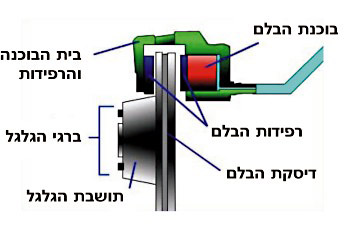Question:1
What is the function of the vehicle’s Electronic Stability Program (ESP) System?
Category : Know Your Vehicle
Question:2
What regular vehicle maintenance check-ups should be performed by the driver?
Category : Know Your Vehicle
Question:3
How does the braking system of a vehicle work?

Category : Know Your Vehicle
Question:4
What is the function of the ABS system?
Category : Know Your Vehicle
Question:5
What is the correct order of actions while changing a wheel?
Category : Know Your Vehicle
Question:6
If a rider feels that the motorcycle foot brake,does not work efficently he should:
Category : Know Your Vehicle
Question:7
When air bags are installed in a vehicle:
Category : Know Your Vehicle
Question:8
How would you ensure economic fuel consumption?
Category : Know Your Vehicle
Question:9
When is a blue warning light displayed on the dashboard?
Category : Know Your Vehicle
Question:10
Head lights which are not properly adjusted:
Category : Know Your Vehicle
Question:11
Which type of bulb would you use when required to change a bulb in the vehicle?
Category : Know Your Vehicle
Question:12
What is the function of the vehicle’s dashboard( Control panel)
Category : Know Your Vehicle
Question:13
How can we reduce air pollution caused by the vehicle’s gas emissions?
Category : Know Your Vehicle
Question:14
Where would you place the jack stand while changing a wheel?
Category : Know Your Vehicle
Question:15
The auxiliary (parking/hand) brake may also be used:
Category : Know Your Vehicle
Question:16
One of the differences between manual and automatic transmission vehicles is that:
Category : Know Your Vehicle
Question:17
Why is it important for the vehicle to have intact bumpers (fenders)?
Category : Know Your Vehicle
Question:18
How will you recognize brakes overheating?
Category : Know Your Vehicle
Question:19
What are the risks of driving a vehicle with a leaking engine exhaust system?
Category : Know Your Vehicle
Question:20
What is a vehicle GPS navigation system?
Category : Know Your Vehicle
Question:21
Which accessories reduce the severity of injury in a road accident?
Category : Know Your Vehicle
Question:22
What might be the consequence of excessive brake use?
Category : Know Your Vehicle
Question:23
What are you required to do when the engine temperature lamp indicates engine overheating?
Category : Know Your Vehicle
Question:24
Why is it necessary to use the handbrake for parking only?
Category : Know Your Vehicle
Question:25
What are you required to do after changing a wheel?
Category : Know Your Vehicle
Question:26
The correct vehicle tire size is:
Category : Know Your Vehicle
Question:27
For what reason might the indicator warning light on the dashboard flash too quickly?
Category : Know Your Vehicle
Question:28
What is the function of the vehicle’s auxiliary (parking/hand) brake?
Category : Know Your Vehicle
Question:29
What should a driver verify before lifting his car to change a wheel?
Category : Know Your Vehicle
Question:30
What is the significance of the head rests on the vehicle’s seats during an accident from behind?
Category : Know Your Vehicle

